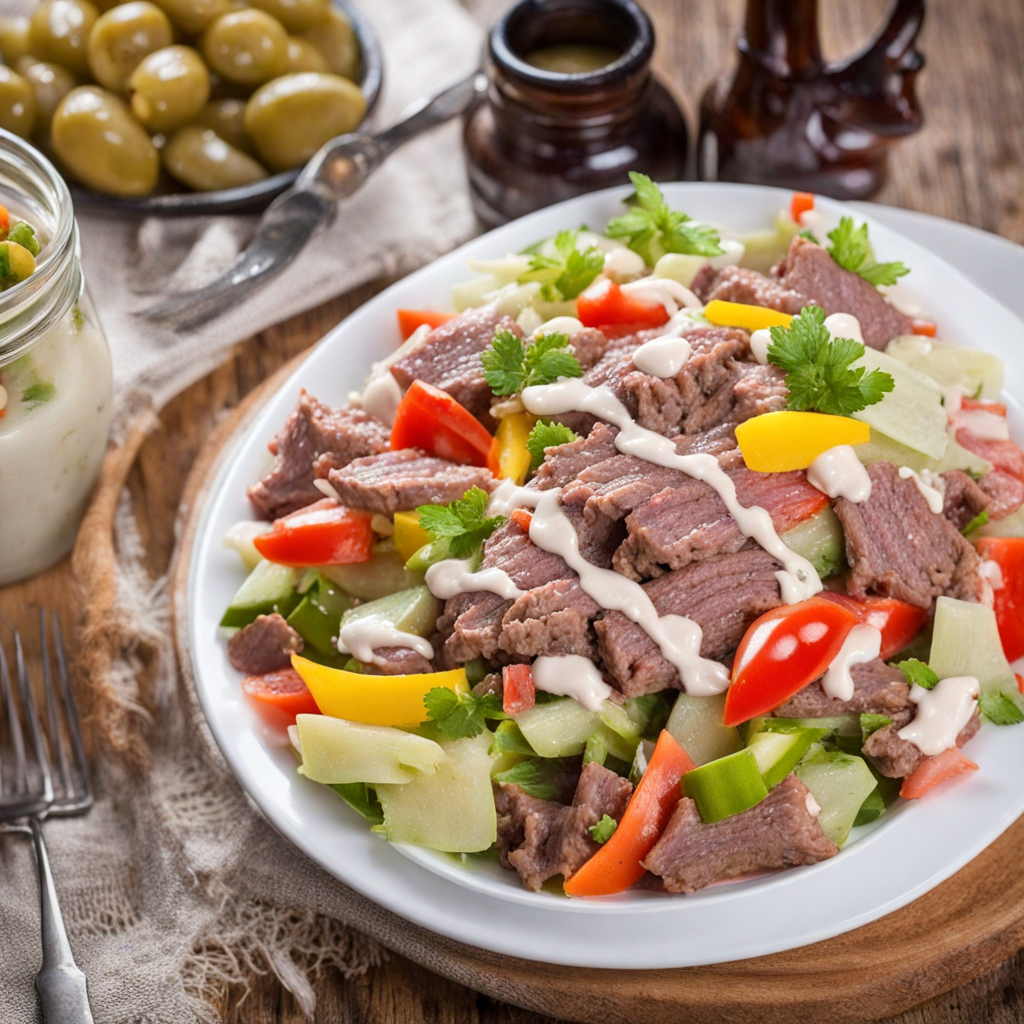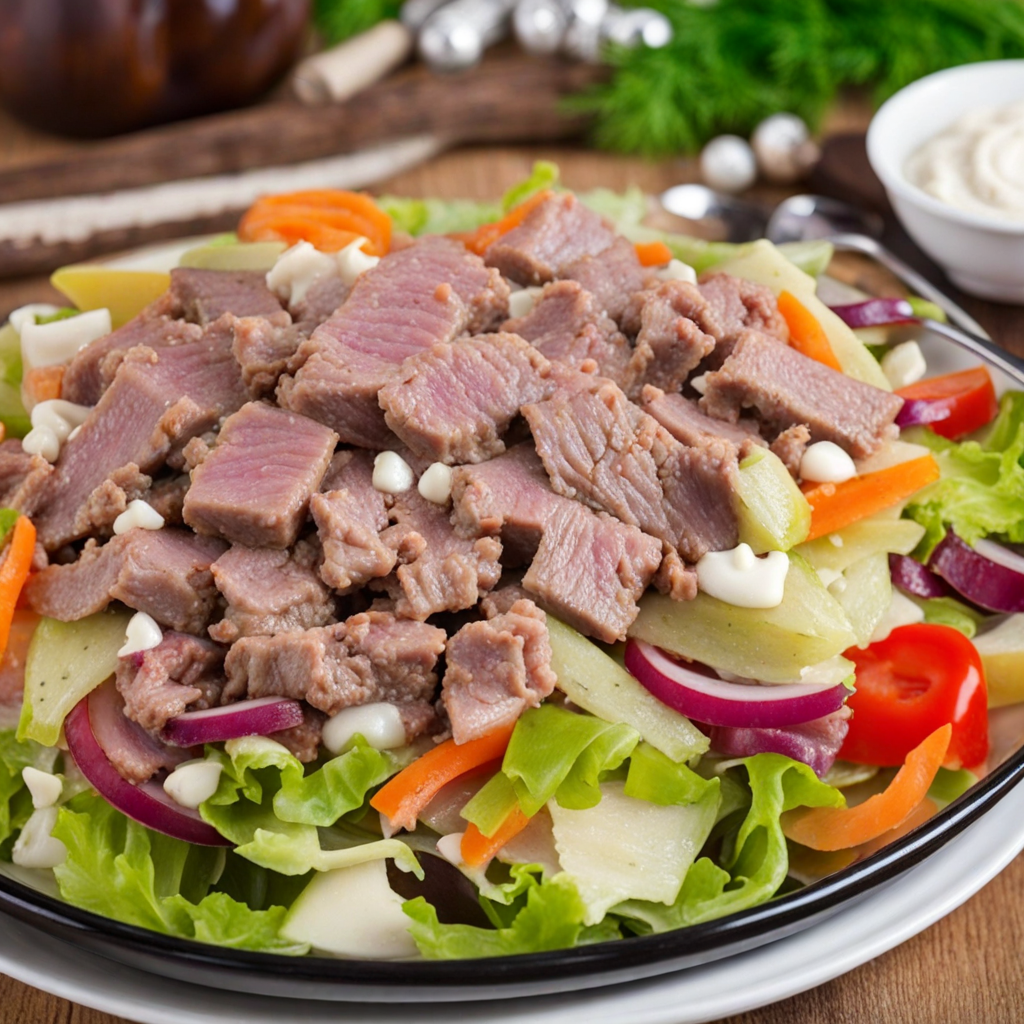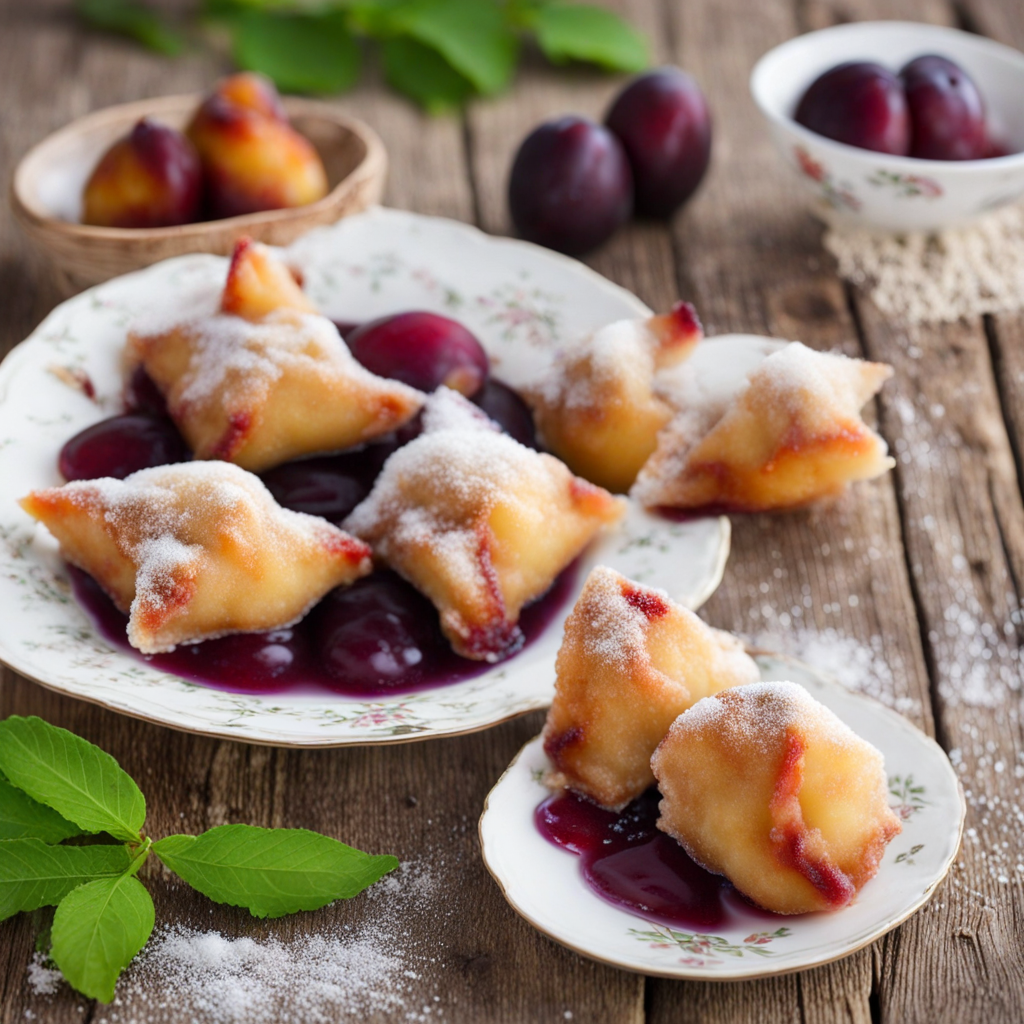Beef Salad
Beef Salad, known as "Salată de Boeuf" in Romania, is a traditional dish that beautifully showcases the country's culinary heritage. This delightful salad is primarily made from tender, boiled beef, which is diced into small pieces to create a rich and hearty base. The beef is complemented by a medley of colorful vegetables, including carrots, peas, and sometimes potatoes, which add both flavor and texture. The ingredients are often mixed together with a generous amount of mayonnaise, resulting in a creamy, indulgent dressing that binds the salad together while enhancing its overall taste. What sets Beef Salad apart is its balance of flavors and textures. The savory notes of the beef are perfectly contrasted by the sweetness of the carrots and the freshness of the peas, creating a dish that is both satisfying and refreshing. Often garnished with pickles or olives, this salad offers a delightful crunch that elevates every bite. The vibrant colors of the ingredients make it visually appealing, making it a popular choice for festive occasions and family gatherings in Romania. Beef Salad is much more than just a dish; it is a symbol of Romanian hospitality and culinary tradition. Typically served chilled, it can be enjoyed as a starter or a side dish during celebrations. Each family may have its own variation, with some adding hard-boiled eggs or mustard for an extra kick. This unique combination of flavors and textures makes Beef Salad a must-try for anyone looking to explore the delicious world of Romanian cuisine.
How It Became This Dish
The Journey of Salată de Boeuf: A Romanian Culinary Treasure Origins and Historical Background Salată de boeuf, a beloved Romanian dish, is often translated as “beef salad,” though its essence transcends this simple nomenclature. Its origins can be traced back to the 19th century, during a period of heightened culinary exchange in Europe. The dish is thought to have been inspired by the French “salade de boeuf,” which reflects the profound influence of French cuisine on Eastern European gastronomic traditions. In the mid-19th century, Romania was undergoing significant changes—political, social, and cultural. The country was transitioning from a feudal society and grappling with its identity amid the greater European context. French culture, considered the epitome of sophistication and refinement, permeated Romanian high society. The aristocracy, influenced by French customs, began to adopt and adapt French culinary practices, leading to the creation of dishes like salată de boeuf. Composition and Variations Traditionally, salată de boeuf is made with finely diced boiled beef (or sometimes poultry), mixed with a variety of vegetables, such as carrots, peas, and potatoes. These ingredients are bound together with a generous amount of mayonnaise, often flavored with mustard for an added kick. The dish is typically garnished with pickles, olives, and sometimes hard-boiled eggs, creating a vibrant presentation that is as delightful to the eye as it is to the palate. Over the years, salată de boeuf has evolved, with regional variations emerging across Romania. In some areas, cooks might add ingredients like celery or even incorporate fish, showcasing the dish's adaptability. The base remains the same, but the creativity of the chef often dictates the final outcome. Cultural Significance Salată de boeuf is more than just a dish; it is a symbol of celebration and hospitality in Romanian culture. It is a staple at festive occasions, such as Christmas, Easter, weddings, and family gatherings. Its presence on the table signifies not only the importance of the event but also the love and care that goes into preparing a meal for loved ones. The dish is often served as an appetizer, reflecting the Romanian tradition of beginning meals with lighter fare before moving on to heartier courses. In this way, salată de boeuf embodies the spirit of togetherness and joy that permeates Romanian culture. Sharing food, especially one that requires time and skill to prepare, fosters a sense of community and connection among family and friends. Evolution Through the Decades As Romania moved through the 20th century, the dish saw further transformations, particularly during the communist era. The culinary landscape was heavily influenced by the availability of ingredients, which were often scarce. During this time, the use of mayonnaise became more standardized, as homemade versions were replaced by mass-produced brands. This led to a more uniform taste, but the dish remained a cherished staple in Romanian households. In the post-communist era, the culinary scene in Romania began to flourish, with chefs exploring traditional recipes while also embracing modern techniques and global influences. Salată de boeuf has experienced a renaissance, with many chefs reinterpreting the classic recipe. Some have experimented with healthier ingredients, such as Greek yogurt in place of mayonnaise, or incorporating local, organic produce. This reinvention has ensured that the dish remains relevant in contemporary Romanian cuisine. Culinary Techniques and Preparation Preparing salată de boeuf is an art form that requires attention to detail and a deep respect for tradition. The first step involves selecting quality cuts of beef, which are boiled until tender. The vegetables also require careful preparation: they are boiled separately to maintain their distinct flavors and textures. Once cooked and cooled, the ingredients are diced into uniform pieces, which is essential for achieving the dish’s signature look. The mixing process is a delicate balance of flavors. The mayonnaise must be incorporated gradually to avoid overwhelming the dish, allowing the natural tastes of the ingredients to shine through. The final touch often includes a sprinkle of fresh herbs, such as parsley or dill, adding a layer of freshness and color. Salată de Boeuf in Contemporary Romania In today’s Romania, salată de boeuf continues to hold a special place in the hearts of many. It is a dish that bridges generations, with recipes often passed down from mothers to daughters, maintaining the familial connection through food. Restaurants, bistros, and homes alike proudly feature this dish, sometimes accompanied by a glass of local wine or a shot of țuică, a traditional Romanian plum brandy. Furthermore, salată de boeuf has gained recognition beyond Romania’s borders. It has become a popular dish among the Romanian diaspora, serving as a comfort food that evokes memories of home. This migration of flavors has led to an increased interest in Romanian cuisine globally, with salată de boeuf often featured in cultural festivals and culinary events. Conclusion: A Dish of Heritage and Memory Salată de boeuf is more than just a culinary delight; it encapsulates the essence of Romanian culture and history. From its French-inspired origins to its current status as a beloved festive dish, it has adapted and evolved over time, reflecting the changes in society and culinary practices. As Romania continues to embrace its rich culinary heritage while looking to the future, salată de boeuf remains a symbol of tradition, family, and celebration. Each bite offers a taste of nostalgia, a connection to the past, and a celebration of the present. Whether enjoyed at a grand feast or a simple family gathering, salată de boeuf is a reminder of the power of food to bring people together, to create memories, and to nourish the soul.
You may like
Discover local flavors from Romania







